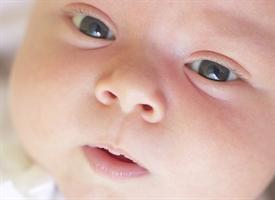Patient Care
Babies at URMC Among Area’s First to Get New Screening for Heart Disease

Newborns at Strong Memorial Hospital and Highland Hospital of the University of Rochester Medical Center are getting a new, non-invasive test to help determine if they are at risk for certain potentially dangerous heart conditions. The screening, done 24 to 48 hours after birth, measures a baby’s oxygen level which, in some cases, may serve as a warning for potentially fatal congenital heart defects in babies that otherwise appear healthy.
Critical Congenital Heart Defect (CCHD) screening is recommended by the American Academy of Pediatrics for all full-term newborns. Though currently voluntary in New York state, legislation has been introduced to make it mandatory. A handful of states already require the simple, inexpensive test.
At Strong Memorial Hospital, staff began screening newborns on March 1, which means that babies born on Feb. 29 were be among the first tested. Highland began screening shortly afterward. Screening is done using pulse oximetry, a small device that painlessly clips on to the newborn’s right hand and foot for a few seconds and gives a reading of the level of oxygen in the baby’s blood and the baby’s pulse rate. If any abnormalities are detected, the newborn would receive further evaluation to determine if additional tests are needed.
Screening is important because, according to the Centers for Disease Control (CDC), babies with CCHDs are “at significant risk of disability or death if their CCHD is not diagnosed soon after birth.” In the United States, about 4,800 babies born every year have one of seven CCHDs.
“While critical congenital heart defects are relatively rare, CCHD screening may help detect issues for follow-up,” said Maureen Freedman, nurse manager for the Birth Center at Strong Memorial Hospital. “We already screen newborns for a number of conditions – some of which address quality of life issues, such as hearing screening. By adding this simple, painless, inexpensive screening, we could potentially save lives.”
By adding this simple, painless, inexpensive screening, we could potentially save lives.

